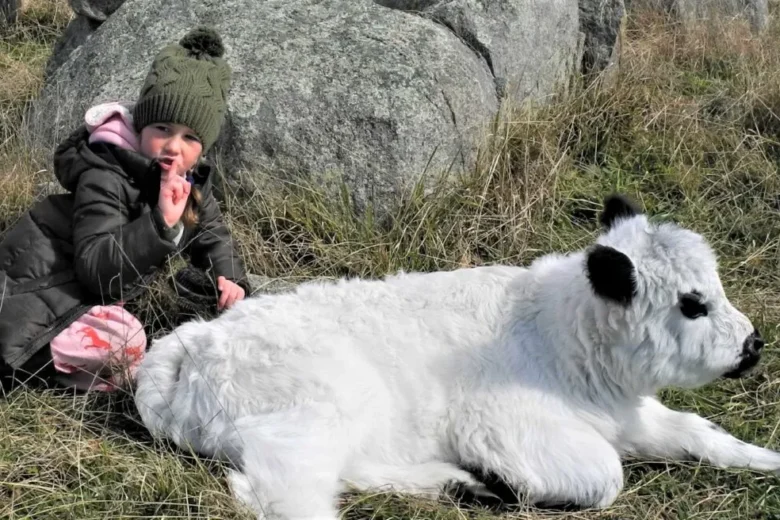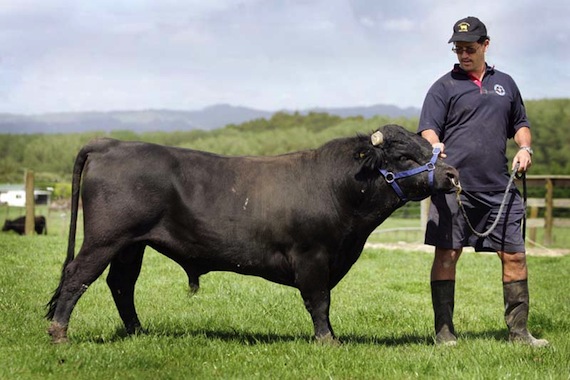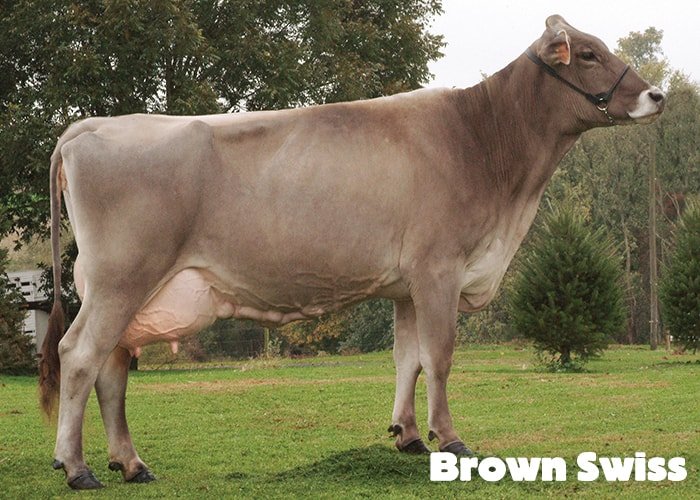If you’ve ever driven past open pastures in the U.S. and wondered what all those different kinds of cows are called, you’re not alone. From the glossy black coats of Angus cattle to the rugged look of Texas Longhorns, every breed has its own story, temperament, and purpose. Each one was shaped by the land, the weather, and the needs of the farmers who raised them. Knowing your cattle breeds isn’t just for show—it’s part of understanding how American agriculture runs at its roots.
Cattle are more than just animals grazing in fields. They represent generations of breeding, adaptation, and survival. Some were bred for meat, others for milk, and a few for both. Their personalities can differ just as much as their appearances—some are gentle and calm, while others have that wild glint in their eyes that says, “You’d better not get too close.” Whether you’re raising cattle, planning to buy a few heifers, or simply curious about farm life, getting to know these breeds is a joy in itself.
I still remember the first time I learned to tell an Angus apart from a Hereford. I was standing by an old split-rail fence, watching them graze side by side. One was a deep, velvety black; the other had that classic red body with a white face that looked straight out of a farm painting. My mentor chuckled and said, “You’ll never mix them up again once you know their attitude.” He was right. So let’s walk through 25 of the most common cattle breeds you’ll see across the USA—each with its own look, personality, and purpose.
1. Angus
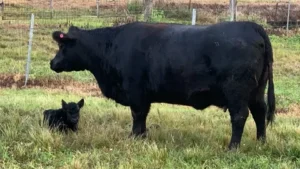
Angus cattle are probably the most recognized breed in America. Their smooth black coats shine under the sun, and they’re famous for producing tender, well-marbled beef. Curious about Angus cow colors? Most are solid black, but there’s a red variation called Red Angus that’s equally popular. Angus are easy to handle, great for beginners, and known for their motherly instincts.
2. Hereford
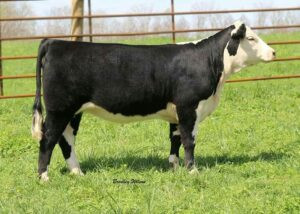
With their reddish-brown bodies and striking white faces, Herefords are hard to miss. They’re calm, hardy, and can thrive in tough weather conditions. Many farmers appreciate how well they graze on rough pasture, making them ideal for ranches that cover large open areas.
3. Holstein
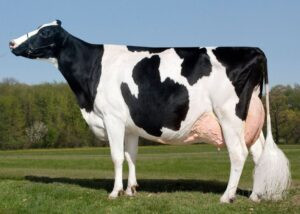
If you’ve ever seen a black-and-white cow on a milk carton, that’s a Holstein. They’re the most common dairy breed in the U.S. and famous for producing large quantities of milk. Despite their big size, Holsteins are generally docile and easygoing.
4. Jersey
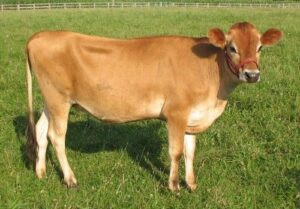
Small but mighty, Jersey cows are known for their creamy milk, perfect for butter and cheese. Their tan coats and big brown eyes make them one of the prettiest breeds around. They’re gentle and adaptable, which makes them a favorite on small dairy farms.
5. Charolais
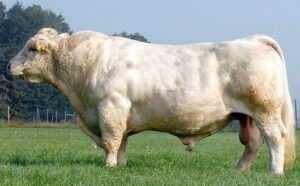
These beautiful, snow-white cattle come from France but have found a strong home in the U.S. They’re muscular and efficient beef producers. Charolais are often crossed with other breeds to improve growth rates and carcass quality.
6. Simmental
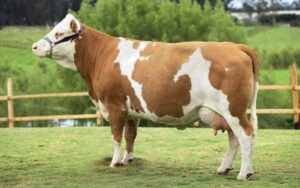
Simmental cattle are large, strong, and known for their dual-purpose use—milk and meat. They come in colors ranging from gold to red and white. Farmers love them for their fertility and easy calving.
7. Texas Longhorn
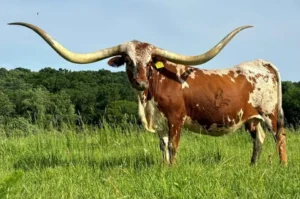
Nothing says “American West” like the Texas Longhorn. With their sweeping horns and spotted hides, they’re living symbols of frontier history. Longhorns are hardy, adaptable, and known for lean, flavorful beef.
8. Limousin
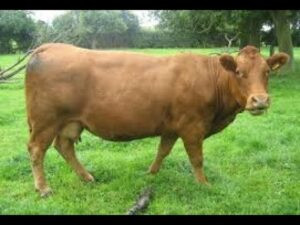
Limousins are golden-red beef cattle with a naturally lean build. They’re popular for their excellent feed efficiency and high-yield carcasses. You’ll often find them in crossbreeding programs aimed at improving meat quality.
9. Brangus
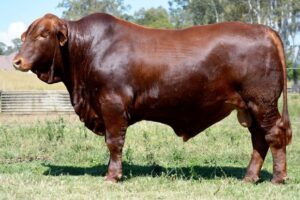
As the name suggests, Brangus cattle are a cross between Brahman and Angus. They’re sleek, black, and built for heat resistance and hardiness. Perfect for southern climates where pure Angus might struggle with the heat.
10. Brahman
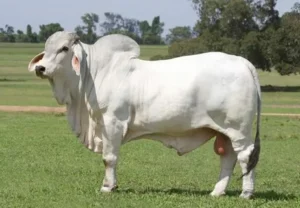
With their distinctive hump and floppy ears, Brahmans are built for hot weather. Originating from India, they’re highly resistant to parasites and can handle harsh conditions better than most breeds. They might not be cuddly, but they’re survivors.
11. Red Angus
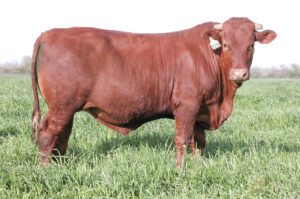
Similar to the traditional Angus but with a rich, reddish-brown coat. Red Angus are favored in warmer climates where dark coats might absorb too much heat. They share the same calm temperament and beef quality as their black cousins.
12. Shorthorn
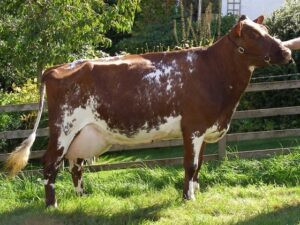
Shorthorns are one of the oldest breeds in the world and come in red, white, or roan. They’re used for both dairy and beef production. Their friendly nature and adaptability make them great for smaller farms.
13. Beefmaster
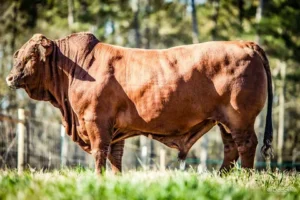
Beefmasters are built for beef—plain and simple. They’re a mix of Brahman, Hereford, and Shorthorn. Their strong constitution and good fertility make them a reliable choice for ranchers across the south.
14. Santa Gertrudis
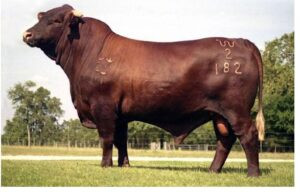
Developed in Texas, Santa Gertrudis cattle are deep red and extremely hardy. They’re heat tolerant and produce high-quality beef. They’re often praised for their strong maternal instincts and longevity.
15. Maine-Anjou
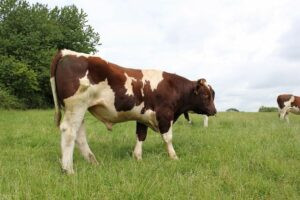
Originating from France, these cattle are large, gentle, and efficient meat producers. Their coats are usually dark red with white markings. Maine-Anjou are popular among farmers who value calm temperament and fast growth.
16. Gelbvieh
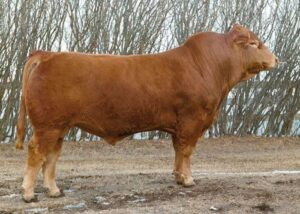
Gelbvieh cattle hail from Germany and are known for their golden coat and strong muscling. They perform well in both beef and dairy systems. Farmers appreciate their fertility and efficient feed conversion.
17. Brown Swiss
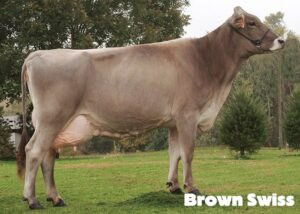
One of the oldest dairy breeds, Brown Swiss are known for their strength and sweet disposition. Their milk has a great balance of fat and protein, making it perfect for cheese production. They also handle heat and cold surprisingly well.
18. Ayrshire
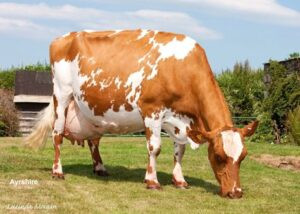
Ayrshire cows come from Scotland and have beautiful red and white coats. They’re hardy grazers and known for producing milk with excellent butterfat content. If you like pretty cows that work hard, Ayrshires fit the bill.
19. Guernsey
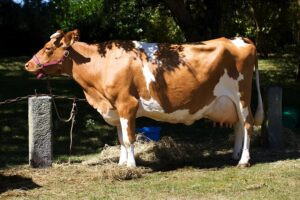
Guernseys are golden-coated dairy cows that produce rich, flavorful milk with a naturally high butterfat level. They’re calm, gentle, and tend to live long productive lives.
20. Chianina
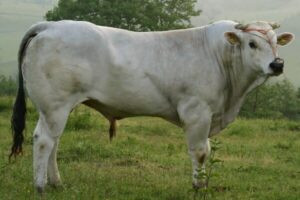
Massive and elegant, Chianina cattle are one of the oldest breeds from Italy. They’re tall, muscular, and mostly white with black skin. They’re prized in crossbreeding for their fast growth and lean beef.
21. Highland
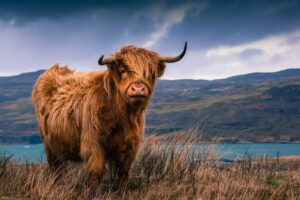
If you’ve ever seen a photo of a cow with long shaggy hair and curved horns, that’s a Highland. These Scottish natives are tough as nails and can survive in cold, windy environments. Plus, they’re ridiculously photogenic.
22. Belted Galloway
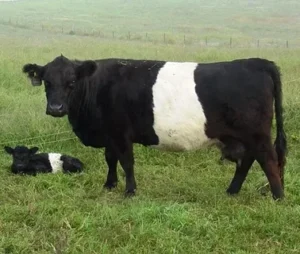
Also known as “Oreo cows” because of their black bodies and white midsection, Belted Galloways are hardy, grass-fed specialists. Their meat is flavorful and lean, and they do well in cooler climates.
23. Devon
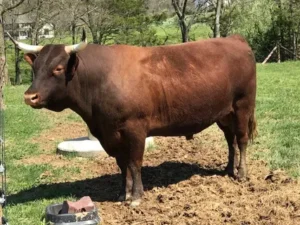
Devon cattle are deep red, strong, and efficient grazers. They were once known as the “Red Rubies” of England. Devons are great for small farms focused on grass-fed beef programs.
24. Pinzgauer
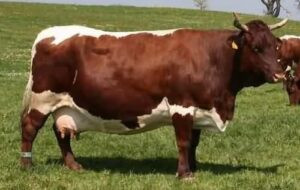
These cattle have beautiful chestnut bodies with white stripes down their backs and bellies. They’re docile and known for good fertility and endurance. Originally from Austria, they’ve adapted well to U.S. conditions.
25. Corriente
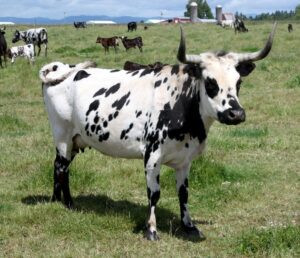
Compact, athletic, and full of energy, Corriente cattle are often used in rodeo events. They’re low-maintenance and produce lean, flavorful meat. Many small-scale ranchers love them for their efficiency and easy calving.
How to Identify Cattle Breeds at a Glance
It’s not as hard as it looks once you know the basics. Pay attention to coat color, horn shape, body size, and temperament. For example, if you see a sleek black cow with no horns, chances are it’s an Angus. A long-horned spotted one? That’s your Texas Longhorn. Take a notebook when visiting farms or auctions—it helps to jot down features until they stick.
FAQ: Common Questions About Cattle Breeds
1. What are the best breeds for beginners?
Angus, Hereford, and Shorthorn are great starter breeds. They’re gentle, adaptable, and easy to manage.
2. Which cattle breeds do well in hot climates?
Brahman, Brangus, and Santa Gertrudis thrive in warmer areas thanks to their heat tolerance.
3. What are the typical Angus cow colors?
Angus cows are mostly black, but Red Angus are a recognized variation. Both share the same great beef quality and calm temperament.
4. Can you mix different cattle breeds on one farm?
Absolutely! Many farmers do. Just make sure you understand each breed’s temperament and nutritional needs before mixing.
5. How can I choose the right breed for my farm?
Consider your climate, feed availability, and whether you want dairy or beef production. Visit local breeders or livestock shows to get a real feel for the animals before you decide.
Final Thoughts from One Farmer to Another
Raising cattle isn’t just about choosing the biggest or prettiest breed. It’s about finding the right fit for your land, your climate, and your own rhythm as a caretaker. Each breed has something special to offer—whether it’s the motherly Angus, the rugged Longhorn, or the charming Jersey. Once you start working with them, you’ll find that cattle farming is more about connection than control. After all, the best herds are built on trust, not fences. So, which of these cattle breeds do you see grazing in your dream pasture?
